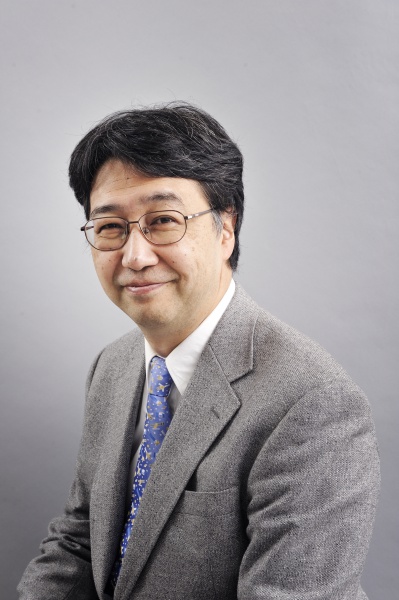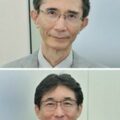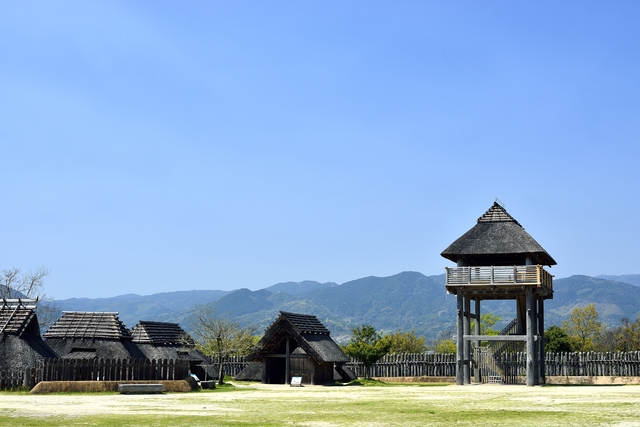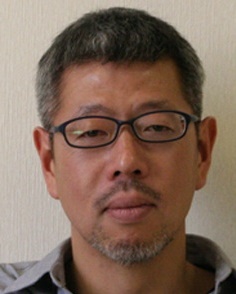BEYOND THE AGE OF ENERGY MYTHS – CONDITIONS FOR "GRADUATING" FROM THE NUCLEAR AGE
Many “myths” and little new information
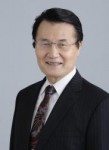
Kitazawa Koichi
Many citizens have maintained an uncertain attitude that: “Nuclear power is dangerous and we want to stop using it, but can we do without it?” This thinking persists even today. Yet surprisingly, we have never had sufficient information on technology, economy or foreign cases that help us find an answer. This is why at the Subcommittee on Energy Alternatives of the Science Council of Japan we set out to gather information that could provide answers to address this uncertainty.
During our studies we found a great many “myths” in all areas. Or perhaps I alone had simply been too ignorant.
First, above all, we found that Japan was extraordinarily slower than other nations worldwide in adopting recyclable energy systems. The ratio of recyclable energy to all power sources is 17% in Germany, 30% in Denmark and 18% in China. Japan is currently at around 3% (or 9% if we account for grand-scale hydraulic power).
The more common news in Japan was instead about China and the United States emitting massive amounts of greenhouse gas, accounting for over 40% of the entire world’s emissions, and that they were unenthusiastic about reducing the figure. Yet our studies found that these two nations were the world’s number one and two investors in recyclable energy. Even their per-capita investment exceeds that of Japan. Many people in the industry said that if Japan invests in recyclable energy, power costs will rise and the country’s international competitiveness will fall, but this also appears to have been a myth.
Second, there was the myth among technicians of “system stability.” They had said that wind and solar are unstable power sources and require storage cells to stabilize the system and supply necessary power. And cells are more expensive than power generators. I frankly thought this was a correct view. Yet when we heard about the situations in Germany and other leading nations, we found that they do not use storage cells. They take an attitude of: “We’re fine as long as we have sufficient thermal or dam-type hydropower. We do the adjustments there.” In other words, it is only a matter of keeping the system flexible enough to allow the supply-end system to accept power from wind and other sources.
Then there was the myth that Europe is stable because nations like France with nuclear power can accommodate a power shortage. The real sentiment here was probably that a nation like Japan that cannot exchange power with other nations will never be stable. But Germany’s attitude is: “Power cannot be acquired quickly and easily just because you need it. This has nothing to do with the instability of wind or other power sources. We can use thermal power to adjust.” It claims that there should be no problems for at least the next 20-30 years while thermal power is sustained. We need to consider this point well. Of course, when the time comes to completely shut down thermal power, they will have to think about adjusting using hydrogen fuel produced during power surplus, but that is an issue quite far in the future.
Our secretariat, the Subcommittee on Energy Alternatives of the Science Council of Japan, ran an estimate on how much money it would cost us to replace nuclear energy with recyclable energy to produce the same amount of power. The result, though it comes with various conditions such as huge efforts to conserve energy, estimated that the average electricity bill per 2.7-person household would be 6,000-8,000 yen a month. Whether one sees this as too high or reasonable largely depends on how much Japanese values have changed. I thought most people’s reactions I saw seemed “reasonable.”
The next myth was that both solar and wind power require vast land and that it is impossible to do everything with recyclable energy. This is another myth with no logical grounds. True, it would be difficult to allocate 5% of national land to recyclable energy use without proper planning, but matters would be a lot different if Japan were unable to survive without doing so. We could install expansive solar and wind power systems in the same location. Japan has a long coastline, so it could perform offshore wind power as well. With comprehensive efforts we could surely cut the land requirement by half. On top of that, we would be conserving energy, which should cut the land requirement in half again. Of course, it will not be easy to supply all of Japan’s energy with recyclable energy alone, but we must use the word “impossible” very carefully or else we create myths. Is our ultimate vision of Japan that of wind and solar power systems occupying a mere 3% of its land, or of huge nuclear power plants totaling close to 250 units–five times more than we have today? That choice is what we face. We have to settle this case once and for all.
Hokkaido and Tohoku want to conduct wind power generation but cannot get them connected to the power system even today. Wind would produce quality electricity stable enough to share with a broad area. The more generator units there are, the greater the equalizing effect. To do this, they would want to spread the area they could share with, over Hokkaido and Honshu, from Tokyo to Nagoya, Osaka and Kyushu. Wind energy, by doing so, becomes a power source that could be used all day, because wind would always be blowing somewhere.
So we studied just how far electricity is actually delivered. Europe, amazingly, has many submarine cables, with the longest stretching 540 km. Over land, there is a high-voltage, direct current (HVDC) power line with a capacity of several gigawatts (GW) running through Sweden from its north to south, for 2,000 km. The line between Hokkaido and Honshu can only handle 0.5 GW. If Japan could build a 10 GW-class line from Hokkaido to Kyushu and Shikoku, it would have a huge effect in sharing power over a broader area, and we can expect the Hokkaido and Tohoku regions to become major wind power centers.
Sweden has already developed the technology to send HVDC power to remote destinations and is about to export this technology to India and China. In terms of sending a high capacity of direct current power, superconductivity is another focal technology seeing innovation in recent years. A project underway in Europe called ‘DESERTEC’ aims to send power produced in the Sahara Desert using solar energy across the Mediterranean to Europe, and this project is discussing collaboration with Japanese superconductivity technology that they hope to use.
World heads toward recyclable energy for employment and investment opportunities
It was a fresh surprise to me that efforts of China and the U.S. in recyclable energy have stood out over the last two to three years. China is the world’s number one investor, and its production capacity of wind power already leads the world. Housing 20% of the world’s population, China has come to comprise 30% of the world’s annual investment in recyclable energy. Even in terms of per capita investment, China invests 3,000 yen, versus Japan’s 2,000 yen. In the U.S., financial institutions eyeing social contribution have set up investment funds on recyclable energy that receive investments from people amounting to upward of several trillion yen, and are actively investing in capital and venture businesses.
Global investment in recyclable energy is expanding with extraordinary momentum, from two trillion yen in 2004 to 20 trillion yen in 2010. This 20 trillion yen is far greater than the current annual capital investment in nuclear energy. Recyclable energy already surpasses nuclear energy in terms of facility scale, and we know for sure that it is also about to exceed nuclear power in the amount of power produced. This is the reality around the world. The world is already investing in recyclable energy and Japan alone is lagging. We often hear that France sustains a nuclear power-centered policy, but President Nicolas Sarkozy has already declared in 2007 that the nation would increase its budget for recyclable energy to match that of nuclear energy. With this, France has begun a major project on offshore wind power generation, aiming to supply 22% of all power with recyclable energy by the year 2020.
Another reality of the world the public did not know about is the aging state of nuclear power plants. The average age of nuclear reactors in the world today is 26 years. Standard life for a French reactor is 30 years and for U.S. ones it is 40 years. The French type is set for a shorter life because it runs on higher pressure. Within the next 10-20 years, over 300 of the 441 reactors around the world will surpass their age of retirement. The world has been unenthusiastic about constructing new nuclear plants in the last 25 years due to the Three Mile Island incident in 1979 and Chernobyl in 1986. The U.S. and U.K., which used to be active advocates of nuclear power, have not built a single new plant in the last 25 years.
Replacing all these retiring reactors would be extremely difficult, and the International Energy Agency (IEA) estimates that the number of nuclear power plants in Europe and the U.S. will fall drastically in the next 30 years. This means that the world must start adopting recyclable energy on a grand scale to reduce greenhouse gases. Otherwise a drastic increase in fossil energy is inevitable and resources will near depletion. In other words, the recyclable energy industry must rapidly expand in the coming years.
In Germany, the recyclable energy industry now the subject of an annual 4 trillion yen in investment is said to employ 300,000 people directly and 1 million if including indirect employment. The Japanese nuclear energy industry that nets sales of an almost equivalent amount (4.5 trillion yen) employs 60,000, or 80,000 including indirect employment. Recyclable energy is an industry that creates relatively huge employment.
The difference between growth and cost burden
In Japan, people say that when the nation adopts recyclable energy, it increases “people’s cost burden.” This term is another myth.
Think of it this way. When something like an iPad or a cell phone is invented, people welcome it as technological innovation. No one says that it will increase the public’s cost burden. This is because they provide people with previously non-existent new value, increase GDP and lead to economic growth. People will spend more, but their income will increase as well, which makes the technology sustainable. Now say that an electric power technology with new, never-before value has been developed and has doubled sales over the previous technology. And also say that this technology is solar cells and the price of its power is more expensive. If the people welcomed this clean power, it should, like the iPad or the cell phone, raise GDP and lead to economic growth. Yet for some reason, talk of higher electricity prices always focuses on the increase in people’s cost burden and never on economic growth. This is unfair. The primary cause is probably in the sense of the cost burden that industry feels, but I think industry need only actively enter this new business. People obtain greater value, so if the business can become sustainable, industries should be able to label it economic growth.
Leisure expenses in Japan amount to 100 trillion yen/year, or 800,000 yen per citizen. Total electricity expenses, on the other hand, are only 15 trillion yen/year. Nuclear power accounts for only about 4.5 trillion yen of that figure. The weight of people’s value on the economy is far greater today than it was in the past. And values are drastically shifting toward safety and assurance.
Germany annually invests 50,000 yen per capita, or a total of 4 trillion yen (1.4% of GDP, 2010), in recyclable energy. Yet German exports are booming, and its GDP growth in 2010 was 3.6%, its highest level since the East/West integration. Japan only invests about 2,000 yen per person, a mere 4% of Germany’s figure. While Germany has invested enthusiastically in recyclable energy and its economy is booming, Japan has hesitated and hardly seems to have heightened its international competitiveness. And what of China, which also has greater per-capita investment in recyclable energy (3,000 yen/year) than Japan? Has China’s international competitiveness weakened? The “international competitiveness myth” also lacked proper grounds.
There are decent and practical reasons why Japanese businesses can be enthusiastic about recyclable energy. There is no reason why Japan alone should sit and simply watch the doors of this huge industry open.
Japan, in fact, has produced superior research and development, and businesses are doing quite well. What heightened solar cell technology to a commercial level was the Sunshine Project launched by the (then) Ministry of International Trade and Industry in 1974. Innovations from that time still have significant impact on today’s technology.
This year, Showa Shell Sekiyu began operation of a major, 1 GW-capacity plant in Kyushu for producing inexpensive compound semiconductor cells called CIGS[1. Chemical abbreviations Cu (copper), In (indium), Ga (gallium) and Se (selenide); indicating an inexpensive and thin new type of solar cell that combines the four elements] apart from conventional silicon solar cells. Mitsubishi Chemical achieved light-energy conversion efficiency in excess of 10% for the first time for organic solar cells, and has commercialized it in a power system for convenience stores. Organic types offer more variations than inorganic types, so once they are commercialized we can expect further improvements. In terms of silicon solar cells, a group at the Institute for Materials Research at Tohoku University developed a new, energy-efficient and inexpensive production method called dendritic crystal growth. I expect these Japanese technologies will gain even greater attention in the future. Even in the field of wind power, Mitsubishi Heavy Industries succeeded in developing a gearless offshore windmill that is easy to maintain, and in which Europe is showing interest. As with these examples, Japan needs to prove itself in technology.
Japanese businesses have for some time now continued to back away before they even face competition on the global stage. In other words, they have lost their mindset of actively investing. In semiconductors, LCDs (Liquid Crystal Display) and LEDs (Light Emitting Diode), they were unable to dare to invest despite possessing advanced technology. Such an attitude will not improve Japanese technology or revamp the economy. I have come to believe through our studies that Japan’s path to recovery in this century will open up when the country boldly enters the energy market.
Recyclable energy creates the model for recovery
Areas hit by the Great East Japan Earthquake have a high elderly population ratio and lack jobs for the younger generations. Producing income and employment for these areas is the key factor to recovery. Aging households could rebuild their fallen homes while offering their roofs as space for solar cells. The coastline areas have the potential to be equipped with wind power generators run jointly by the local community. These measures would produce income in the disaster-hit areas. At the same time, recyclable energy would create jobs in areas where the system is installed. These two factors–income and employment –are extremely important. The fact that the recyclable energy business has huge employment potential poses good fortune for Japan today.
Japan pays an annual 23 trillion yen to import fossil fuel, and the money flows abroad. By producing this energy domestically, the nation would allow the same money to circulate nationally as a long-term funding source for investing in recyclable energy.
Japan’s net external assets (primarily in the form of foreign bonds, corporate takeovers and establishment of business subsidiaries) have increased in recent years at a rate of approximately 20 trillion yen each year. This figure is the highest in the world. And these are private funds that were invested abroad rather than domestically. Private businesses of Japan, in other words, have the potential to invest 20 trillion yen every year. This money will flow within Japan if we create safe and advantageous investment targets within the nation. Recyclable energy is a highly possible target. The feed-in tariff (FIT) system for power adopted in Germany creates domestic, low-risk investment targets under the government’s guarantee. If we can come up with tax systems and regulations that allow sustainable investment we can achieve recyclable energy growth rather than cost burden.
We can consider the nation’s judgment 50 years ago to adopt nuclear power as legitimate. Most advanced nations around the world had adopted it, and it contributed to the nation’s rapid economic growth. But since then, circumstances have changed drastically. The Japanese economy has grown several dozen-fold, the position that power and nuclear energy takes in the economy is relatively diminished, and culture and leisure expenses now account for a greater part of expenditures. People’s values have also shifted toward assurance and safety. While we must assess the role that nuclear power played up to this point, I think the time has come for us to “graduate” and prepare for the next boom; which is why I use the term sotsu-genshiryoku (graduate from nuclear power).
Darwin’s Theory of Evolution teaches us that species capable of quickly adapting to environmental change will survive into the next generation. Japan is a particularly unique earthquake-prone nation that sits on a tectonic border. One of every five of the world’s earthquakes measuring over magnitude 6.0 occurs in Japan. Japan must voluntarily commence its run toward the next era, or else the world will be filled with nuclear power plants. If mankind reduces fossil energy without steering its rudder toward recyclable energy, it will need some 10,000 nuclear plants around the world. That means China will have one-fifth of that amount, and these 2,000 nuclear reactors will all be built to Japan’s west and windward. Consider how yellow sand from China rides the wind every spring and fills our skies. The lesson from the Fukushima incident was that accidents are a probability issue. We must reduce their number.
We are nearing possession of all the right conditions for graduating from nuclear energy. I believe that the opportunity for us to shift to recyclable energy and preserve the environment for the children of our future is just around the corner.
Notes:
Edited and revised based on an interview on June 29, 2011.
Editor’s comments: In this edition, to follow on the previous edition’s article, “The Goodwill of a Scientist and Comments on Society,” we asked Mr. Kitazawa for his personal opinions on energy issues based on discussions held in the Subcommittee on Energy Alternatives at the Science Council of Japan.)
Translated from “enerugii no shinwa jidai wo koete – sotsu-genshiryoku jidai wo mukaeru joken,” Kagaku, September 2011, pp. 0855-0859, ©2011 by Kitazawa Koichi. Reprinted by permission of the author c/o Iwanami Shoten, Publishers.
